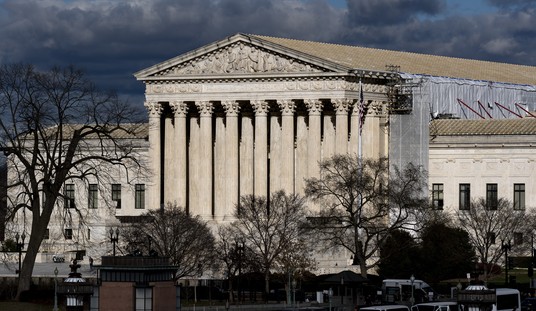The US economy did better than expected in January, according to the jobs report released this morning. Beating expectations, employers added 257,000 jobs in the month, while the workforce participation rate went up by two-tenths of a point to climb off the bottom of a 38-year low. The U-3 jobless rate still rose slightly to 5.7%, however:
Total nonfarm payroll employment rose by 257,000 in January, and the unemployment rate was little changed at 5.7 percent, the U.S. Bureau of Labor Statistics reported today. Job gains occurred in retail trade, construction, health care, financial activities, and manufacturing. …
After accounting for the annual adjustments to the population controls, the civilian labor force rose by 703,000 in January. The labor force participation rate rose by 0.2 percentage point to 62.9 percent, following a decline of equal magnitude in the prior month. Total employment, as measured by the household survey, increased by 435,000 in January, and the employment-population ratio was little changed at 59.3 percent. (See table A-1. For additional information about the effects of the population adjustments, see table C.)
The BLS also issued sharp upward revisions to November and December that added almost another 150,000 jobs:
The change in total nonfarm payroll employment for November was revised from +353,000 to +423,000, and the change for December was revised from +252,000 to +329,000. With these revisions, employment gains in November and December were 147,000 higher than previously reported. Monthly revisions result from additional reports received from businesses since the last published estimates and the monthly recalculation of seasonal factors. The annual benchmark process also contributed to these revisions.
Some of this comes from the annual revisions to seasonal adjustments, and the scope of those differences will undoubtedly cause some to question the dramatic increases. Across the year, though, three months had significant decreases due to the adjustments, and in three other months the differences were less than 20K, more or less a rounding error at these statistical levels.
The ADP employment report on Wednesday showed 213,000 jobs added in the private sector, the lowest since an identical number last September but still high enough to surpass population growth. The ADP pattern undershoots the BLS figures through the last five months but shows the same basic parabola as BLS, with the peak in November and results falling since then. With the increase in the workforce of 700K, the increase in both U-3 (5.6% to 5.7%) and U-6 (11.2% to 11.3%) would not be unexpected, even while surpassing population-maintenance levels of job creation. That part appears to add up, at least mathematically.
Wages also jumped up in the January:
In January, average hourly earnings for all employees on private nonfarm payrolls increased by 12 cents to $24.75, following a decrease of 5 cents in December. Over the year, average hourly earnings have risen by 2.2 percent. In January, average hourly earnings of private-sector production and nonsupervisory employees increased by 7 cents to $20.80.
Stagnant wages have become a political issue, although not quite top-tier. The lengthy recovery and its enduring stagnation had become a marker for middle-class economic issues. This jump won’t solve the problem, but it will give the White House a talking point to argue that the policies which produced the weakest recovery in post-WWII history are working. A 2.2% increase over the previous year, however, isn’t exactly a strong case for that position. Neither is the 62.9% workforce participation rate — it’s only remarkable because of the 36-year nadir at which that indicator has been sitting for the past two years.
Nevertheless, this is a positive report, and a step in the right direction. It beat the estimates, which is what matters to the markets in the short run. The AP’s Christopher Rugaber offers a mostly positive, and realistic, take on the report:
U.S. employers hired at a stellar pace last month, wages rose by the most in six years, and Americans responded by streaming into the job market to find work.
The Labor Department said Friday that the economy gained a seasonally adjusted 257,000 jobs in January, and added far more in previous months than originally estimated. Businesses added 414,000 jobs in November, the government now says, the most in 17 years. Total job gains in December were also revised higher, to 329,000, up from 252,000. …
There are now 3.2 million more Americans earning paychecks than there were 12 months ago. That lifts consumer spending, which drives about 70 percent of economic growth.
More hiring, along with sharply lower gasoline prices, has boosted Americans’ confidence and spending power. Consumer confidence jumped in January to its highest level in a decade, according to a survey by the University of Michigan. And Americans increased their spending during the final three months of last year at the fastest pace in nearly nine years.
The gas price issue may come into play if that sharply rises later this year. This does offer at least a correlative argument that keeping the supply high and prices low in the oil market is good for the economy. We’ll see whether that lesson gets learned.








Join the conversation as a VIP Member